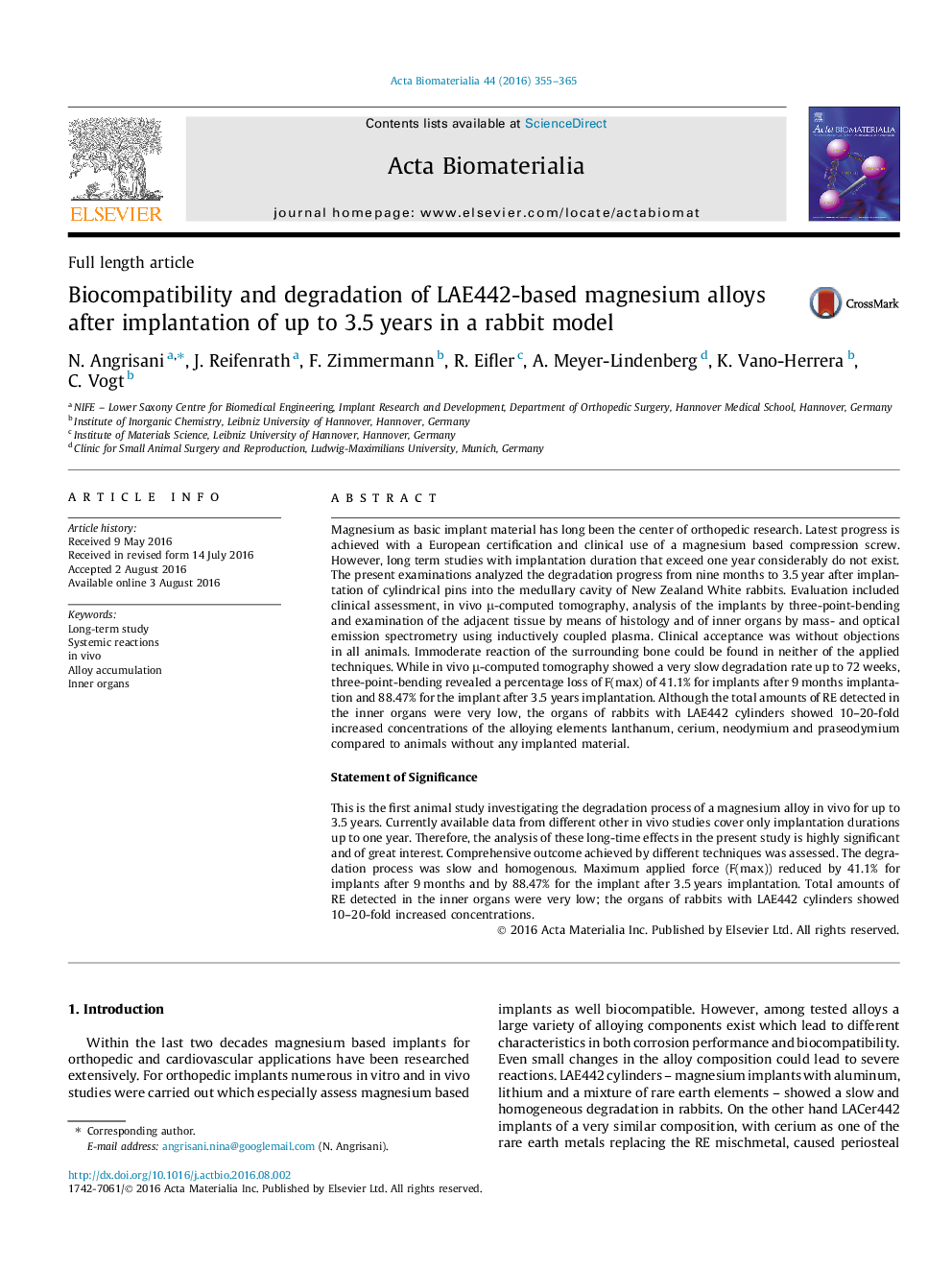| کد مقاله | کد نشریه | سال انتشار | مقاله انگلیسی | نسخه تمام متن |
|---|---|---|---|---|
| 6450049 | 1415942 | 2016 | 11 صفحه PDF | دانلود رایگان |

Magnesium as basic implant material has long been the center of orthopedic research. Latest progress is achieved with a European certification and clinical use of a magnesium based compression screw. However, long term studies with implantation duration that exceed one year considerably do not exist. The present examinations analyzed the degradation progress from nine months to 3.5 year after implantation of cylindrical pins into the medullary cavity of New Zealand White rabbits. Evaluation included clinical assessment, in vivo μ-computed tomography, analysis of the implants by three-point-bending and examination of the adjacent tissue by means of histology and of inner organs by mass- and optical emission spectrometry using inductively coupled plasma. Clinical acceptance was without objections in all animals. Immoderate reaction of the surrounding bone could be found in neither of the applied techniques. While in vivo μ-computed tomography showed a very slow degradation rate up to 72 weeks, three-point-bending revealed a percentage loss of F(max) of 41.1% for implants after 9 months implantation and 88.47% for the implant after 3.5 years implantation. Although the total amounts of RE detected in the inner organs were very low, the organs of rabbits with LAE442 cylinders showed 10-20-fold increased concentrations of the alloying elements lanthanum, cerium, neodymium and praseodymium compared to animals without any implanted material.Statement of SignificanceThis is the first animal study investigating the degradation process of a magnesium alloy in vivo for up to 3.5 years. Currently available data from different other in vivo studies cover only implantation durations up to one year. Therefore, the analysis of these long-time effects in the present study is highly significant and of great interest. Comprehensive outcome achieved by different techniques was assessed. The degradation process was slow and homogenous. Maximum applied force (F(max)) reduced by 41.1% for implants after 9 months and by 88.47% for the implant after 3.5 years implantation. Total amounts of RE detected in the inner organs were very low; the organs of rabbits with LAE442 cylinders showed 10-20-fold increased concentrations.
230
Journal: Acta Biomaterialia - Volume 44, 15 October 2016, Pages 355-365